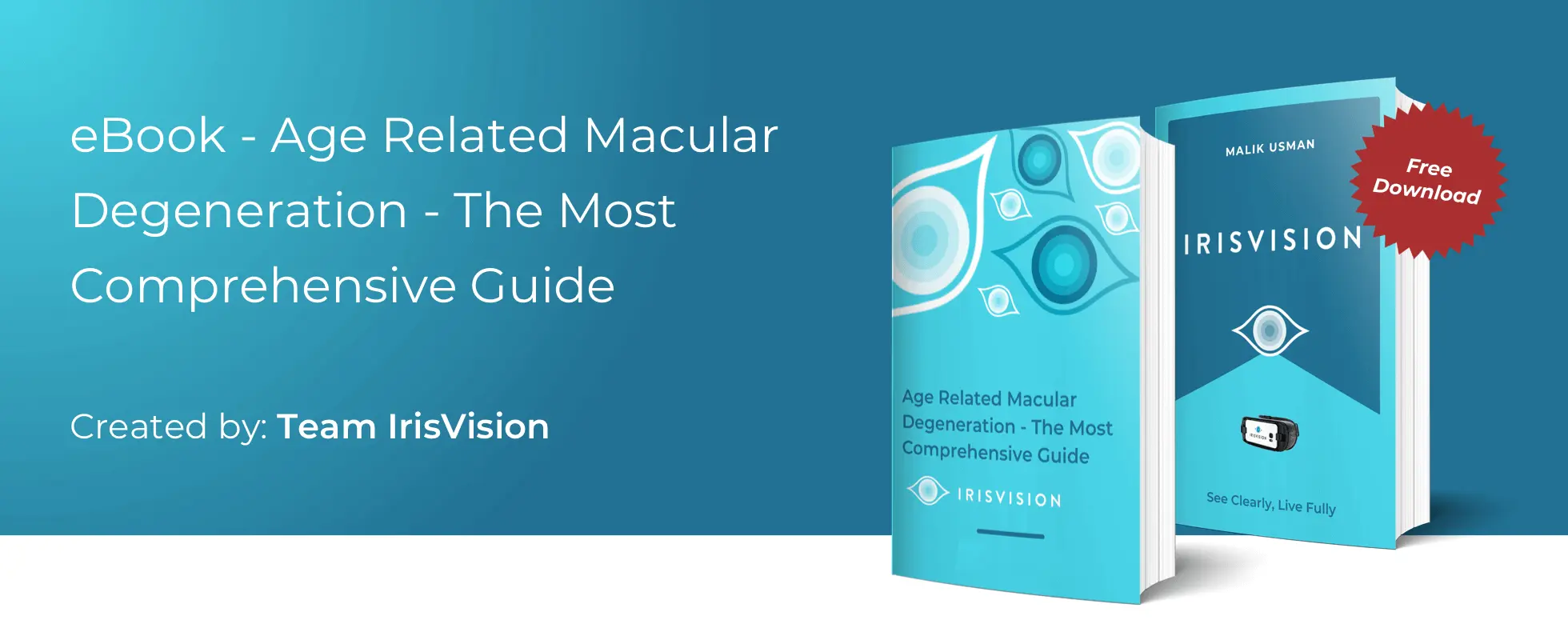
#LIVE2.0 #Review
According to the findings of a report shared on Lighthouse International:
Not only has this, but the following estimates from the same report make it further clear that the prevalence of vision impairment gets higher with age.
All these facts and figures serve to establish the correlation of old age and vision problems. So, what does it mean for you? It means resorting to preventive measures from a very young age to make sure your eyes remain healthy as you age.
Let’s have a look at some of the most common vision problems likely to affect you with aging and learn about some of their major symptoms, so that you can seek immediate professional assistance from an eye doctor, ophthalmologist or an optometrist for best possible diagnosis and treatment of your eye problem(s).
Having a blind spot in your field of vision is commonly referred as “Scotoma”. It might be present somewhere in the center of your vision or around the edges. Quite often, it appears as a spot of flickering light somewhere around center of your vision, which might seem drifting around the eye creating the arcs of light. Its major symptoms can include a spotted area in your field of vision, expected to vary from very light to dark, blurred or even flickering. Other symptoms include feeling trouble seeing certain colors and requiring bright light to see clearly.
Most people are expected to notice this particular eye condition, “Presbyopia”, in their mid 40’s. The lens within the eye of children and young adults can easily focus on objects, differently and correctly for object close by or far away, but aging might affect the lens’s ability to focus rightly. This phenomenon is referred as presbyopia and the issue can be rectified with reading glasses and contacts in most cases.
The outer clear layer covering your eye is called “cornea” and sometimes an uneven curve in it results in blurred vision, labeled as “Astigmatism”. Anyone with astigmatism can have somewhat blurry vision all the time. It is quite a common eye condition, many people suffering from it so slightly that their vision remains unhindered due to it. However, people having severe astigmatism might need to squint frequently in a bid to focus rightly on objects. Though squinting is not known to hurt your eyes, it can still lead to headaches. In majority of the cases, astigmatism progresses really slowly. Its major symptom is your inability to see things clearly without glasses or contacts in any amount of light or at any distance. You might also find your vision partly focused and partly blurry; for instance, horizontal lines in an image appearing totally focused while vertical lines appearing blurry.
Yes, nearsightedness is also known as “Myopia”, a commonly existing eye problem in aging people where objects near you appear clear and objects far away from you appear blurry. Too large or too small eyeball is responsible for myopia in most cases and it can also happen when cornea, the outer layer of your eye, is too curved. Due to this, light rays tend to focus somewhere in front of the retina (the light-sensitive tissues constituting the back of your eye) instead of focusing directly onto it. Myopia develops quite slowly, taking years to progress and usually it is totally curable with the help of glasses, contacts or surgery sometimes.
As the name suggests, it’s about your eyes producing tears excessively, which can be because of a host of different reasons, such as eyes’ sensitivity to light, wind or even environmental changes. Shielding your eyes appropriately with sunglasses mostly solves this problem, but if that doesn’t help, there might be some serious problem like blocked tear duct or an eye infection. So, consult your eye doctor for apt treatment if tearing in your eyes continues for some time.
Unlike tearing, dry eyes reflect your eyes’ inability to produce enough tears or quality tears, mostly due to malfunctioning tear ducts. This can make your eyes red, itchy or burning. Though losing some vision due to dry eye is rare, but if you’re too careless, it’s still a possibility.
The presence of tiny spots or specks drifting through your field of vision is referred commonly as “Floaters”. These are more noticeable in bright light conditions, such as outdoors or in a well-lit room. Usually not considered a serious problem, the sudden onset of floaters signals some serious eye problem. For example, if floaters appear before you accompanied by flashes of light, it can be a sign of retinal detachment. That’s why you need to immediately consult an eye doctor if you observe a sudden change in type and frequency of floaters.
Perhaps the most common way to describe cataracts is the clouding of the lens of the eye, which is present behind the colored part of the eye, the iris. One of the major functions of this lens is to help focus the incoming light and images on the retina, comprised of the photosensitive cells. Clouding of the lens means trouble seeing clearly. Aging is considered to be the biggest reason for cataracts, so it is mostly found in older people. More than half of all U.S adults aged 80 or above are believed to have either cataracts or a cataract surgery. Though people rarely lead to complete blindness due to cataracts, you can still lose enough vision due to them to make it a problem for you to recognize objects. Some of the major symptoms include a blurry vision, sensitivity to bright light, varying color vision and frequently changing eyeglasses or contacts’ prescription. Though cataract surgery has become quite a common eye treatment nowadays, you can also adopt best practices to prevent cataracts naturally.
Glaucoma is an eye disease in which your eye’s optic nerve is damaged, mostly due to excessive pressure building up inside it. This happens when normal flow of watery fluid between cornea and lens of the eye is blocked. It is among the diseases capable of inflicting permanent blindness and vision loss if not detected early on. Since it doesn’t have much of observable and identifiable symptoms through its early stages, regular eye exams are a must. However, some of its symptoms include severe eye pain, blurred vision, redness in eyes, halos around lights and nausea/vomiting accompanied with severe eye pain.
When it comes to sever vision loss in elderly, age-related macular degeneration (AMD/ARMD) comes forth as the leading cause of severe, irreversible vision loss in adults aged 60 or above all through the developed world. Only in the U.S., AMD currently affects around 11 million people and the number is expected to go beyond 22 million by 2050. AMD also remains painless and symptomless in most of the cases until the eye is already damaged to some extent, which means regular eye exams are quite essential for earlier detection. A blurred or distorted area in your vision can often be the very first symptom of this eye condition. Some other symptoms include straight lines appearing crooked or wavy, things looking smaller than their actual size and colors appearing faded than they used to be. So, instead of waiting to observe any symptoms of the disease, continue with regular eye exams to make sure your eye doctor identifies it as early as possible.
“RP” is the abbreviation commonly used for Retinitis Pigmentosa, which involves a whole group of rare genetic disorders eventually leading to retinal disintegration due to damaged rods and cons (these comprise the photoreceptor cells of the retina). This damage to rods and cons can also lead to blindness. Common symptoms of RP include problem seeing things at night and disturbed peripheral (side) vision.
“Diabetic Retinopathy” or “RP” is the eye disease responsible for most cases of blindness among the adult US population. A whole cluster of blood vessels exists in retina and any unwanted and unnatural changes through it result in RP. These changes can range from swollen blood vessels to fluid leakage in some people and abnormal retinal growth in others. Vision loss and blindness can also be inflicted due to this eye condition. Floaters flickering through the field of vision can be one of the primary symptoms of RP. Other symptoms might include impaired colored vision, fluctuating vision as well as vision loss.
Cornea is the transparent layer constituting the front of your eye, designed to assist your eyes in focusing light. It might get damaged due to a host of factors including injury, injection or sometimes also because of exposure to toxic agents. Eye pain, receded vision, watery eyes and halo affects mark some of its major symptoms.
These problems can hinder eyelids from performing their tasks, i.e. protecting eyes, spreading out tears, regulating the amount of light entering the eyes and so forth. Some common symptoms include tearing, pain and itching. Moreover, the outer edges of eyelids can catch inflammation.
Any blockade or inflammation within the arteries in your temple region is referred as “Temporal Arteritis”. Its symptoms might range from severe headache to tenderness in your temple and feeling pain while chewing. You might observe a sudden vision loss in one eye after a few weeks and in the other soon after. A low-grade fever, weight loss and joint pain are some other symptoms to show up in someone suffering from temporal arteritis.
To conclude, taking good care of your eyes is one way of making sure they remain healthy and functional as long as possible. This also includes heeding to any potential signs and symptoms of eye diseases and consulting your eye doctor immediately for detailed examination and further course of action. However, if your or any of your loved ones are already suffering at the hands of a degenerative eye disease, low vision aids can be of great help in making the best of the vision you’re left with.


Support
See and Connect Today!
IrisVision Global, Inc.
5994 W. Las Positas Blvd, Suite 101
Pleasanton, CA 94588
Email: [email protected]
Support: +1 855 207 6665
Support
See and Connect Today!
IrisVision Global, Inc.
5994 W. Las Positas Blvd, Suite 101
Pleasanton, CA 94588
USA Email: [email protected]
Support: +1 855 207 6665
Support
See and Connect Today!
IrisVision Global, Inc.
5994 W. Las Positas Blvd, Suite 101
Pleasanton, CA 94588
Email: [email protected]
Support: +1 855 207 6665